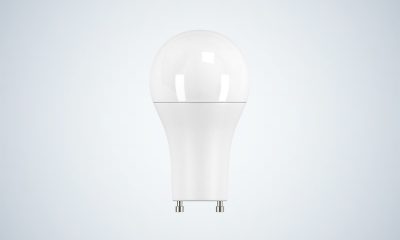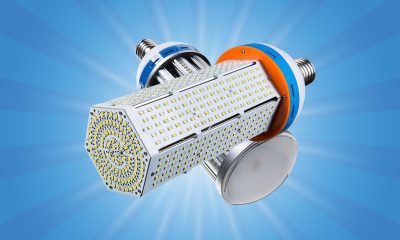What is an A19 light bulb
An A19 light bulb is a general lighting service (GLS) lamp that has an inverted pear shape and is fitted to a medium screw (E26) base. The lamp designation A19 means the bulb has an arbitrary spherical end section tapered to a narrow neck and the diameter of the lamp at its widest point is 19/8 in. or 2-3/8 in. (60 mm). A19 light bulbs have an Edison screw base with a 26-millimeter diameter as measured across the peaks of the thread on the base (male), designated as an E26 or “medium” base. The bulb is approximately 4-3/8 inches (110 mm) in length. A19 light bulbs operate on line voltage (e.g., 120 V).
Applicable markets
E26 Edison screw bases are used in these countries and regions.
- North America: Anguilla, Bahamas, Barbados, Belize, Bermuda, Canada, Cayman Islands, Costa Rica, Cuba, Dominican Republic, El Salvador, Guatemala, Haiti, Honduras, Jamaica, Mexico, Nicaragua, Panama, United States, British Virgin Islands
- South America: Aruba, Colombia, Ecuador, Trinidad and Tobago, Venezuela
- Asia: Japan, Taiwan
- Africa: Libya
Applications
The designations of A-lamps were created for standardizing the design and construction of light bulbs using incandescent lighting technology. A-lamps have been the iconic household light source since Edison’s invention of the incandescent lamp. A19 lamps, in particular, are the most common general light source in use today. These general service lamps also are used widely in commercial, retail, and hospitality applications. The omnidirectional lamps are relied upon as a general lighting source in light fixtures ranging from wall sconces, ceiling lights, pendant fixtures, table lamps, and floor lamps to recessed downlights.
Light sources
A19 LED light bulbs are developed as a replacement for incandescent, halogen and compact fluorescent bulbs that conform to ANSI A19 form factor restriction. An A19 LED lamp is generally an integrated assembly which operates directly in line voltage. A19 LED bulbs reduce energy costs by up to 80% compared to an A19 incandescent or halogen lamp with the same lumen output. With up to 25,000 hours of operation, A19 LED bulbs last up to 10 times longer than incandescents. LED bulbs use phosphor-converted LEDs as the light source, which means the color characteristics of the light source can be tailored. White light produced by standard incandescent lamps exhibits a characteristic warm, yellowish appearance with a color temperature in the 2700–3000 K range. The correlated color temperature (CCT) of white light emitted by LED bulbs can run from “cool” to “warm” along the blackbody curve. There can be a trade-off between luminous efficacy and color rendering performance with LED lighting. While incandescent sources have a color rendering index (CRI) approaching 100, LED replacement bulbs often have a lower color fidelity. The typical CRI value of A19 lamps is between 80 and 85.
Driver circuit
The A19 form factor provides limited volume for a high performance constant current driver. Since switching mode power supplies can be bulky and expensive, A19 LED bulbs generally use a linear power supply which is inexpensive and has a small volume. However, the power loss of a linear regulator is high and the ripple current from the AC input cycle is often not effectively suppressed. The A19 form factor also provides limited space for the heat sink. High temperature can accelerate thermal degradation of LEDs, leading to lumen depreciation and color shift.



















Loading...